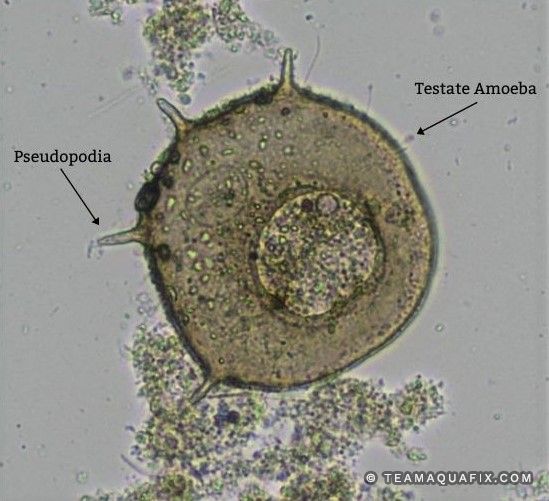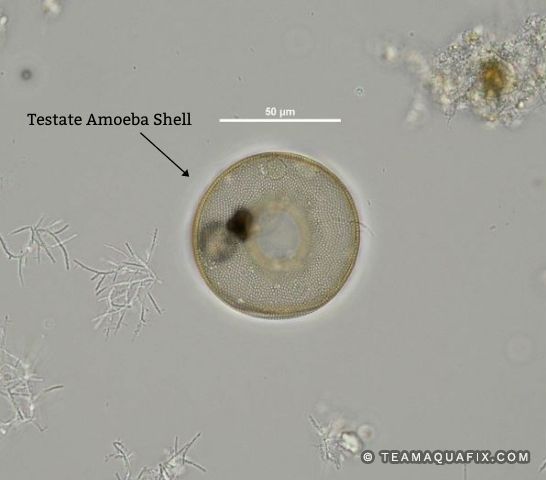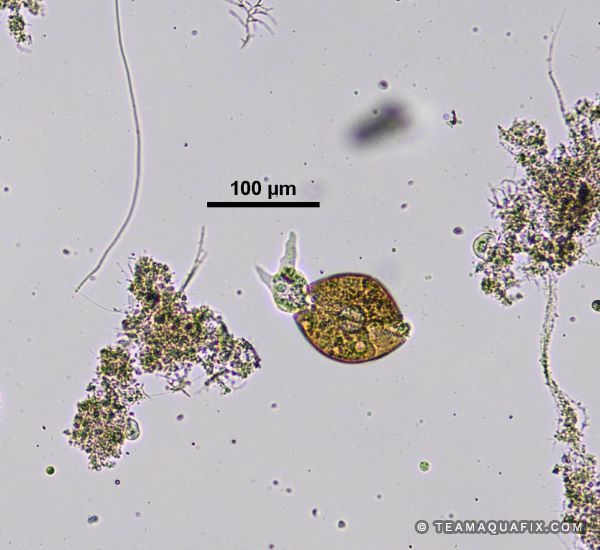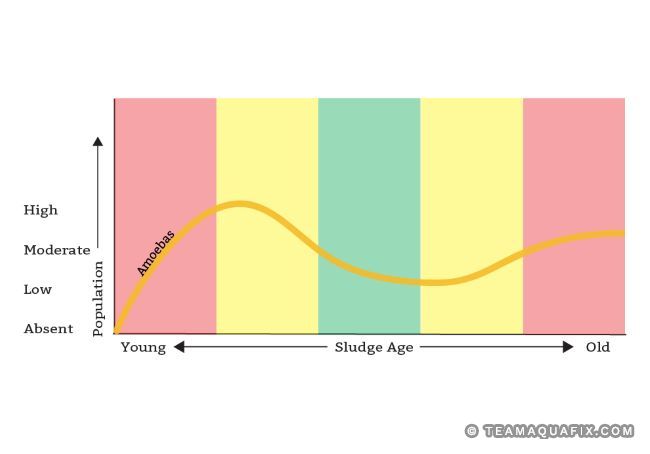Testate Amoeba
Identification
- Have calcified protective shell called a “test”
- Have pseudopodia (false feet)
Why Do I Have It?
- Shock loads of BOD in system
- Young sludge age
- High levels of free bacteria
Associated Plant Conditions
Testate Amoebas prefer shock loads of BOD toxicity and young sludge age: conditions that frequently cause problems with high effluent, BOD, TSS, turbidity, and elevated ammonia levels.
Treatment
The testate amoeba can be an indicator organism for high shock loads of BOD and young sludge age. If you are concerned about your plant conditions contact a technical rep for information and recommendations.
Under the Microscope and in Your Plant
Testate amoebas are typically found in young sludge and conditions with shock loads of BOD. The origin of testate amoebas has been dated back to the Mesozoic era, possibly even the Neoproterozoic era. Just like naked amoebas, young sludge is preferred due to the abundance of free bacteria present. Testate amoebas have a calcified protective shell called a “test.” The test has an opening where they can move and feed with their pseudopodia or “false feet.” This test helps to protect the amoeba in presence of low dissolved oxygen conditions or toxicity. Just like naked amoebas, testate amoeba also feed on free bacteria, algae, and other protozoans. Testate amoebas can be identified under 100x magnification.
Unique Experience in the Field
A customer was observing an abundance of testate amoebas clogging their membrane filter. It was later discovered that their overabundance was triggered by flooding that caused the plant’s return to mix with their influent. This then led to high particulates in their waste stream, creating the ideal environment for testate amoebas.
Interesting Facts
- Since the tests can remain after the amoeba inside dies, scientists can use them to determine how the surrounding landscape has changed over time
- On rare occurrences rotifers have been observed inhabiting tests whether there is a living amoeba inside it or not




